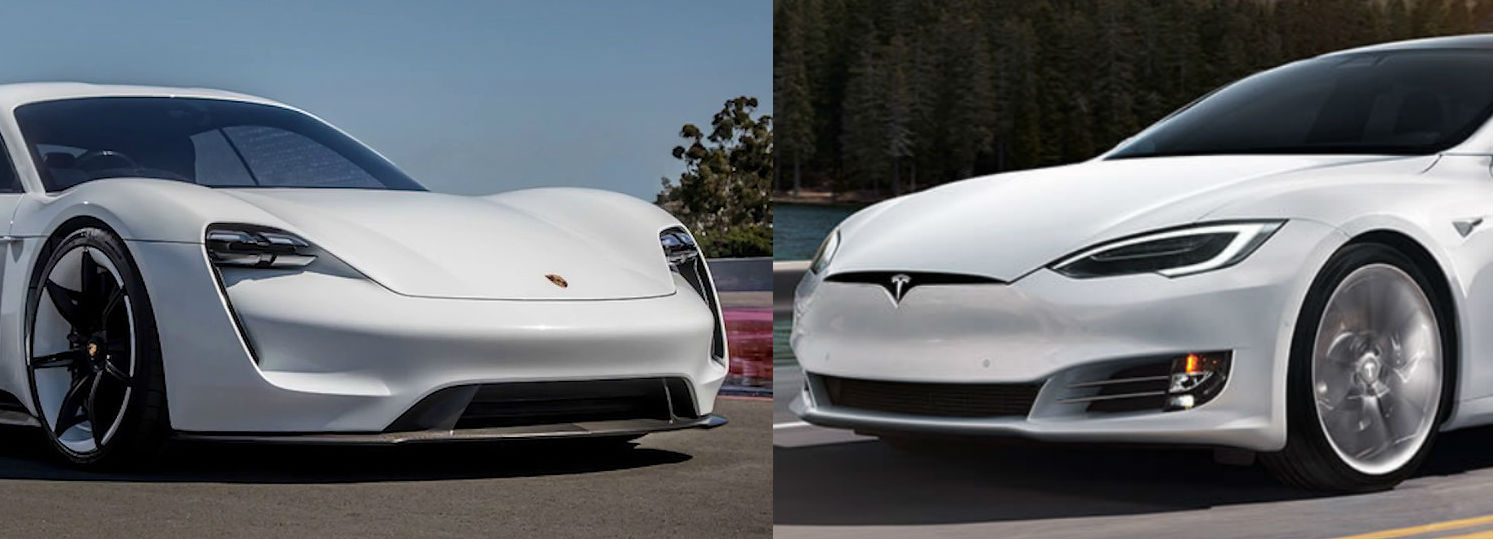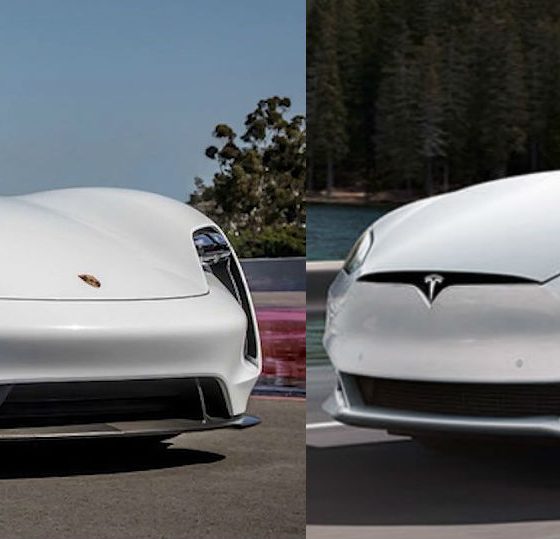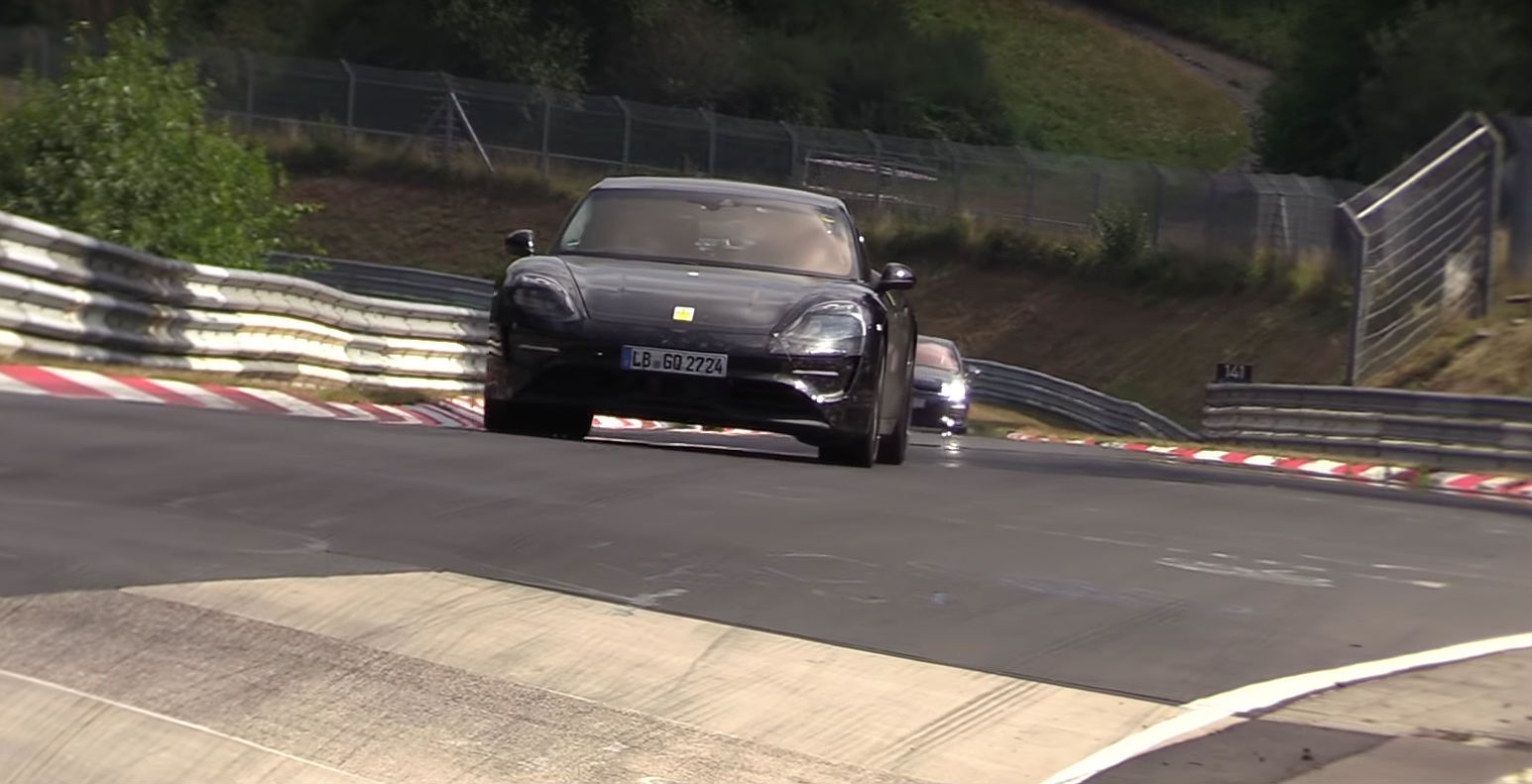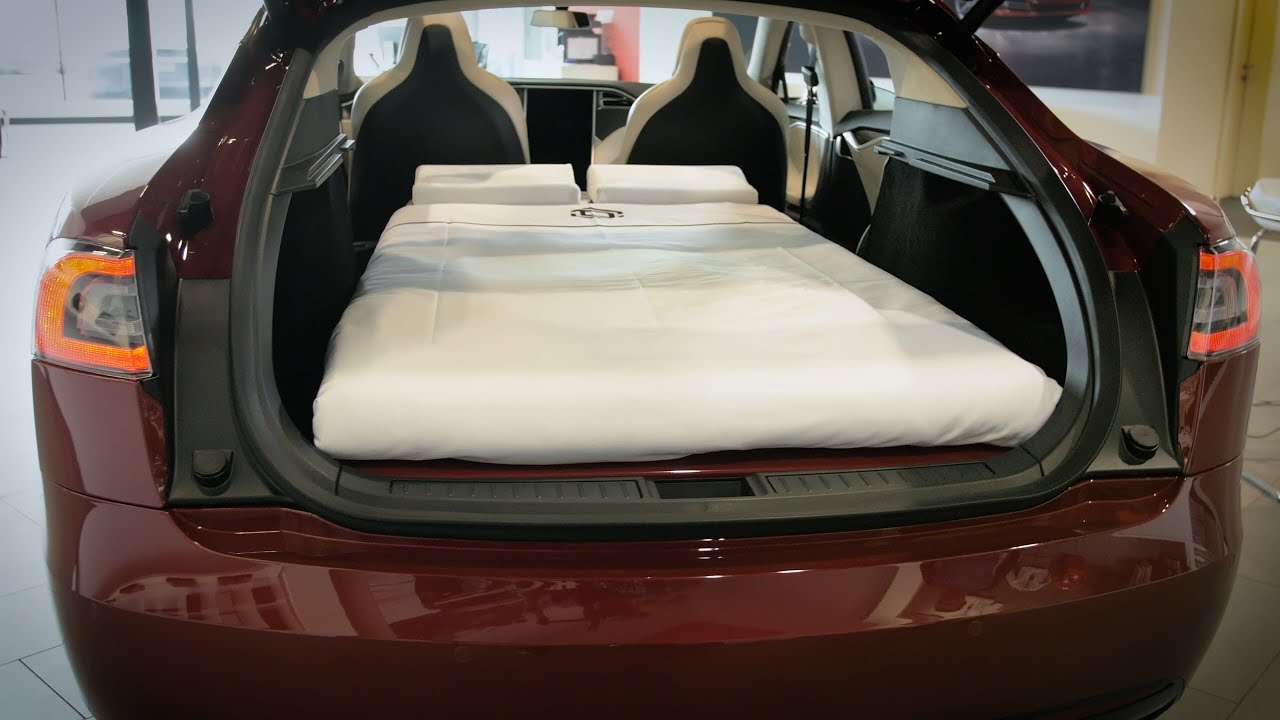

News
Porsche Taycan vs Tesla Model S: Powertrain, battery, performance, and features
The Tesla Model S has been sitting on top of the full-sized electric sedan market for a while now — and for good reason. The vehicle, after all, has played a huge part in changing the public’s perception of what electric cars are capable of. Fast, sleek, and equipped with real range, the Model S is a true no-compromises vehicle.
Among all the competitors for the Model S, there is one that is being developed to compete directly with the electric car. That is the Porsche Taycan, formerly known as the Mission E sedan. The Taycan made its debut during the 2015 Frankfurt Motor Show, and it has captured the imagination of EV enthusiasts ever since. Porsche is yet to unveil the production version of the Taycan, though it has several camouflaged units doing real-world tests today.
Porsche appears to be a legacy automaker that is really serious about making the Taycan a successful vehicle — so much so that the company actually released the car’s specs earlier this year. That said, how does the Taycan compare to the golden standard of four-door electric sedans? Here’s a brief comparison.
Powertrain
The Tesla Model S was initially released with an RWD option, though all variants of the vehicle today are now Dual Motor AWD. The Model S uses three-phase, four pole AC induction motors with copper rotors as its powertrain. The car is also equipped with a drive inverter with variable frequency drive and regenerative braking system.
In contrast, Porsche is using permanently excited synchronous motors (PSM) for the Taycan. In true Porsche tradition, the PSM motors are race-bred, having been used in the Porsche 919 Hybrid racecar. Naser Abu Daqqa, Porsche’s director of electric drive systems, notes that the coils used in the Taycan’s PSM motors are “made of wires that aren’t round, but rather rectangular, making it possible to pack the wires more tightly and get more copper into the coil machines—increasing power and torque with the same volume.”
Batteries and Charging
Tesla’s battery packs hold the standard as some of the finest in the industry. With the Model S, Tesla is using 75 kWh or 100 kWh microprocessor controlled, lithium-ion batteries. The Model S also uses 18650 cells as the components of its packs, which allow the vehicle to reach up to 315 miles per charge. The Tesla Model S is fully compatible with the ~120 kW Supercharger Network, which currently has more than 10,900 stalls worldwide.
The Porsche Taycan is set to use lithium-ion batteries as well. In a press release about the vehicle, the German legacy automaker noted that it would use 4-volt cells in the Taycan’s 800-volt battery pack. Porsche is designing the Taycan for rapid charging at speeds of up to ~350 kW through the upcoming IONITY Network, whose initial construction is underway.
The Porsche Taycan track testing at the Nurburgring.
Performance
The Tesla Model S has a reputation for being a family sedan that can humiliate supercars on the drag strip. The Model S P100D, the vehicle’s top trim, is capable of going from 0-60 mph in just 2.4 seconds with its Ludicrous Mode upgrade. The vehicle’s top speed is software-limited to 155 mph.
Porsche notes that the Taycan would have a 0-60 mph time of 3.5 seconds and a top speed of 155 mph. While this is not as quick as the top-tier Model S P100D, Porsche maintains that the Taycan would be able to handle extended track driving — an area that the Model S does not excel in. Porsche appears to be putting its foot where its mouth is with the Taycan’s track capabilities, as the vehicle has been spotted testing in the Nurburgring multiple times over the past few months.
Software
Tesla is noted for its Autopilot driver-assist system and firmware updates that add features to its vehicles. This was particularly exhibited last year when the company opted to “uncork” the 75D and 100D variants of the Model S and Model X, which lowered the vehicles’ 0-60 mph times. Tesla CEO Elon Musk also noted during the company’s Q2 2018 earnings call that Software V9 would be coming soon, which should introduce the first features of Tesla’s Full Self-Driving suite.
Porsche plans to feature the same system for the Taycan. In an interview with Autocar at the Geneva Motor Show, Porsche chairman Oliver Blume stated that the automaker is also looking to give the Taycan (then called the Mission E sedan) firmware upgrades that improve the car’s performance. Blume also alluded to some degree of self-driving for the vehicle, stating that “there are situations in traffic jams where you will be able to read a newspaper, but our customers take pleasure from driving and this will remain.”

Cargo Space
The Tesla Model S features a lot of space for cargo. The vehicle has a total cargo volume of 31.6 cu ft, comprised of 5.3 cu ft in the frunk, and 26.3 cu ft at the rear. With the back seats folded, the Model S features a very spacious 58.1 cu ft, which is enough to fit an inflatable twin mattress, for those times when drivers would prefer to sleep in their vehicles.
Porsche has not revealed the storage capacity of the Taycan yet, but Stefan Weckbach, the head of electric vehicles at the company, did mention that the car would have 100 liters of storage in the frunk. That’s about 3.53 cu ft, which is smaller than the Model S.
Price
The Model S 75D (the current base model) starts at $74,500, though higher trims like the supercar-slaying P100D could cost as much as $135,000. On the other hand, Porsche expects the Taycan to start at around the ~$75,000 – $85,000 range, putting it close to the price of an entry-level Panamera.
Availability
The Tesla Model S is currently available for purchase, though there are rumors that a refresh featuring an updated interior would be rolled out within the next few quarters. The Porsche Taycan, on the other hand, is expected to start production sometime in 2019, with deliveries likely hitting their stride around 2020.

News
Tesla FSD fleet is nearing 7 billion total miles, including 2.5 billion city miles
As can be seen on Tesla’s official FSD webpage, vehicles equipped with the system have now navigated over 6.99 billion miles.

Tesla’s Full Self-Driving (Supervised) fleet is closing in on almost 7 billion total miles driven, as per data posted by the company on its official FSD webpage.
These figures hint at the massive scale of data fueling Tesla’s rapid FSD improvements, which have been quite notable as of late.
FSD mileage milestones
As can be seen on Tesla’s official FSD webpage, vehicles equipped with the system have now navigated over 6.99 billion miles. Tesla owner and avid FSD tester Whole Mars Catalog also shared a screenshot indicating that from the nearly 7 billion miles traveled by the FSD fleet, more than 2.5 billion miles were driven inside cities.
City miles are particularly valuable for complex urban scenarios like unprotected turns, pedestrian interactions, and traffic lights. This is also the difference-maker for FSD, as only complex solutions, such as Waymo’s self-driving taxis, operate similarly on inner-city streets. And even then, incidents such as the San Francisco blackouts have proven challenging for sensor-rich vehicles like Waymos.
Tesla’s data edge
Tesla has a number of advantages in the autonomous vehicle sector, one of which is the size of its fleet and the number of vehicles training FSD on real-world roads. Tesla’s nearly 7 billion FSD miles then allow the company to roll out updates that make its vehicles behave like they are being driven by experienced drivers, even if they are operating on their own.
So notable are Tesla’s improvements to FSD that NVIDIA Director of Robotics Jim Fan, after experiencing FSD v14, noted that the system is the first AI that passes what he described as a “Physical Turing Test.”
“Despite knowing exactly how robot learning works, I still find it magical watching the steering wheel turn by itself. First it feels surreal, next it becomes routine. Then, like the smartphone, taking it away actively hurts. This is how humanity gets rewired and glued to god-like technologies,” Fan wrote in a post on X.
News
Tesla starts showing how FSD will change lives in Europe
Local officials tested the system on narrow country roads and were impressed by FSD’s smooth, human-like driving, with some calling the service a game-changer for everyday life in areas that are far from urban centers.

Tesla has launched Europe’s first public shuttle service using Full Self-Driving (Supervised) in the rural Eifelkreis Bitburg-Prüm region of Germany, demonstrating how the technology can restore independence and mobility for people who struggle with limited transport options.
Local officials tested the system on narrow country roads and were impressed by FSD’s smooth, human-like driving, with some calling the service a game-changer for everyday life in areas that are far from urban centers.
Officials see real impact on rural residents
Arzfeld Mayor Johannes Kuhl and District Administrator Andreas Kruppert personally tested the Tesla shuttle service. This allowed them to see just how well FSD navigated winding lanes and rural roads confidently. Kruppert said, “Autonomous driving sounds like science fiction to many, but we simply see here that it works totally well in rural regions too.” Kuhl, for his part, also noted that FSD “feels like a very experienced driver.”
The pilot complements the area’s “Citizen Bus” program, which provides on-demand rides for elderly residents who can no longer drive themselves. Tesla Europe shared a video of a demonstration of the service, highlighting how FSD gives people their freedom back, even in places where public transport is not as prevalent.
What the Ministry for Economic Affairs and Transport says
Rhineland-Palatinate’s Minister Daniela Schmitt supported the project, praising the collaboration that made this “first of its kind in Europe” possible. As per the ministry, the rural rollout for the service shows FSD’s potential beyond major cities, and it delivers tangible benefits like grocery runs, doctor visits, and social connections for isolated residents.
“Reliable and flexible mobility is especially vital in rural areas. With the launch of a shuttle service using self-driving vehicles (FSD supervised) by Tesla in the Eifelkreis Bitburg-Prüm, an innovative pilot project is now getting underway that complements local community bus services. It is the first project of its kind in Europe.
“The result is a real gain for rural mobility: greater accessibility, more flexibility and tangible benefits for everyday life. A strong signal for innovation, cooperation and future-oriented mobility beyond urban centers,” the ministry wrote in a LinkedIn post.
News
Tesla China quietly posts Robotaxi-related job listing
Tesla China is currently seeking a Low Voltage Electrical Engineer to work on circuit board design for the company’s autonomous vehicles.

Tesla has posted a new job listing in Shanghai explicitly tied to its Robotaxi program, fueling speculation that the company is preparing to launch its dedicated autonomous ride-hailing service in China.
As noted in the listing, Tesla China is currently seeking a Low Voltage Electrical Engineer to work on circuit board design for the company’s autonomous vehicles.
Robotaxi-specific role
The listing, which was shared on social media platform X by industry watcher @tslaming, suggested that Tesla China is looking to fill the role urgently. The job listing itself specifically mentions that the person hired for the role will be working on the Low Voltage Hardware team, which would design the circuit boards that would serve as the nervous system of the Robotaxi.
Key tasks for the role, as indicated in the job listing, include collaboration with PCB layout, firmware, mechanical, program management, and validation teams, among other responsibilities. The role is based in Shanghai.
China Robotaxi launch
China represents a massive potential market for robotaxis, with its dense urban centers and supportive policies in select cities. Tesla has limited permission to roll out FSD in the country, though despite this, its vehicles have been hailed as among the best in the market when it comes to autonomous features. So far, at least, it appears that China supports Tesla’s FSD and Robotaxi rollout.
This was hinted at in November, when Tesla brought the Cybercab to the 8th China International Import Expo (CIIE) in Shanghai, marking the first time that the autonomous two-seater was brought to the Asia-Pacific region. The vehicle, despite not having a release date in China, received a significant amount of interest among the event’s attendees.








